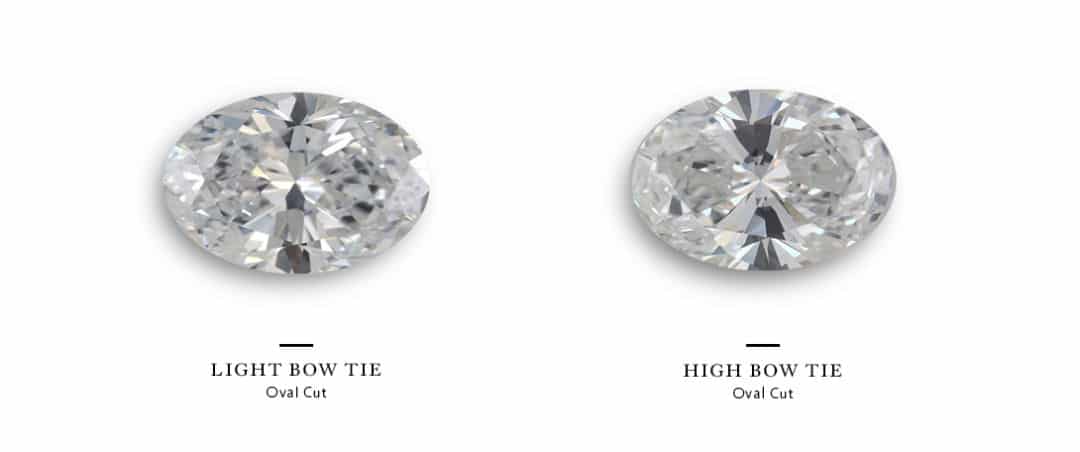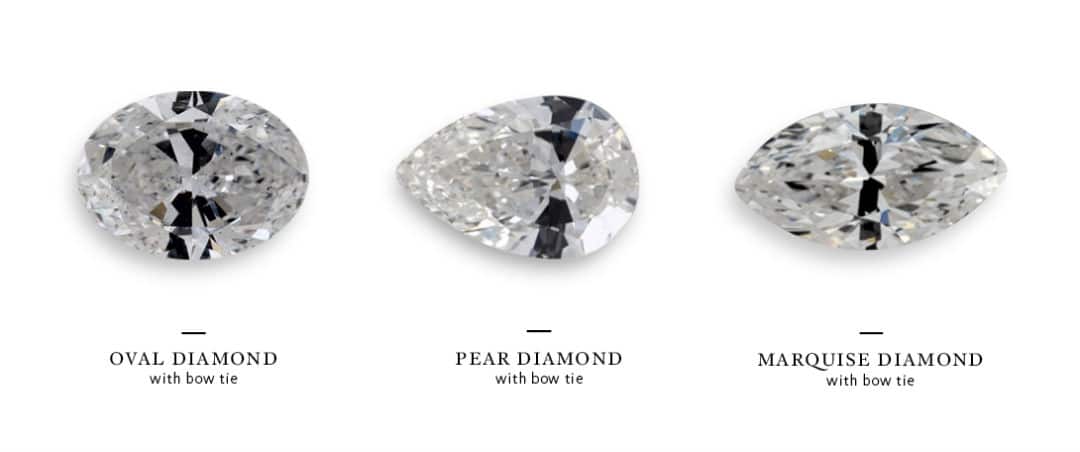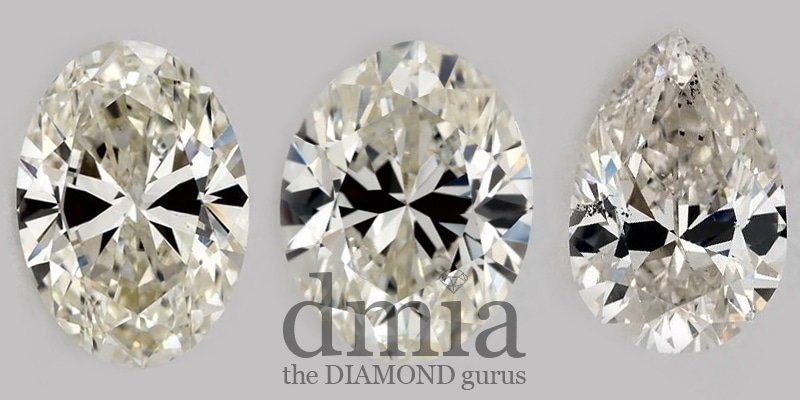When purchasing a diamond, it is important that you know what it is you’re buying. You want to ensure that you are getting your money’s worth and not being misled by the person or company you are purchasing the diamond off of. Have you come across the term ‘Bow Tie Effect’ and want to know more about it? We’re here to tell you what the bow tie effect in diamonds is.
The bow tie effect in a diamond is a common sign of a poorly cut stone. It makes the diamond appear darkened because the light rays aren’t able to be reflected by the facets of the diamond. A diamond should reflect each beam of light that enters. The bow tie effect usually occurs in cuts such as the oval, marquise, or the pear cut.
Thankfully if you don’t want the bow tie effect in your diamond, there are specific shapes that very often do not have the effect unless they are poorly cut. For example, one of the most popular engagement ring shapes is the round brilliant, and this cut is one which can, fortunately, avoid the bow tie effect.
Does the bow tie effect affect the desirability of the diamond?
Many people find that the bow tie effect in some diamond shapes makes it less desirable to buy, but there are some cuts that it commonly occurs to. When this happens, it doesn’t necessarily make them unattractive or a diamond you should not buy.
For cuts like marquise and oval they often have a slight bow tie effect (usually quite rare if they do not have the bow tie effect), these are however seen as desirable. It is generally found that without this, they lack brightness and sometimes can be seen as quite dull. However, this is only when it is a slight effect. If the bow tie affects a large area of the diamond where parts are blacked out these are the diamonds, you want to avoid.
The bow tie effect is very much subjective to your taste, some people love it, and some people hate it. It is each to their own, many desire and many do not.
If a diamond has a bow tie effect, is it worth less money?
Most of the time, a diamond that has a bow tie effect is valued for less than one which does not have one. Sometimes the bow tie is not completely visible, which means that it doesn’t lower the price significantly.
Is a bow tie in a diamond bad? Obviously, the more the bow tie effect is visible, the less money it is worth. Make sure when purchasing your diamond that you aren’t being overcharged if it does have a bow tie effect.
Why does the bow tie effect occur?
The bow tie effect is mainly a human-made problem. It happens when the diamond is being cut into the chosen shape. It isn’t something that can always be avoided. Unfortunately, sometimes it is due to the particular formation being cut as their middle sections are too long.
How can I avoid buying a diamond with a bow tie effect?
We would always recommend that when you are purchasing a diamond, it would be a wise decision to view it in person so you can physically see the diamond and how it looks. The only downside to this is that purchasing from a store can cost slightly more than if you were buying a diamond online. Viewing in person means that you can see how the diamond interacts with light, whether there is a bow tie effect, or if it’s a bow tie effect that benefits the diamond in a good way.

I would recommend doing your research on the bow tie effect, we have explained what the bow tie effect is, the value of a diamond with the bow tie effect, and how it occurs. Still, it is worth doing further research and understanding fully what you would be buying.

Now you know about the Bow Tie Effect In Diamonds!
We want to give you a quick recap, so you know exactly what the bow tie effect is. It is where a diamond has dark patches due to the light not being able to enter certain points of the diamond. It is caused when the diamond is being cut.
Please don’t be worried about getting a diamond with the bow tie effect because some shapes cannot avoid the effect and sometimes it helps to make them look more elegant. However, if the bow tie effect is something you wish to prevent, make sure that you physically see the diamond you want to purchase, it might mean that the diamond will cost you more money.

